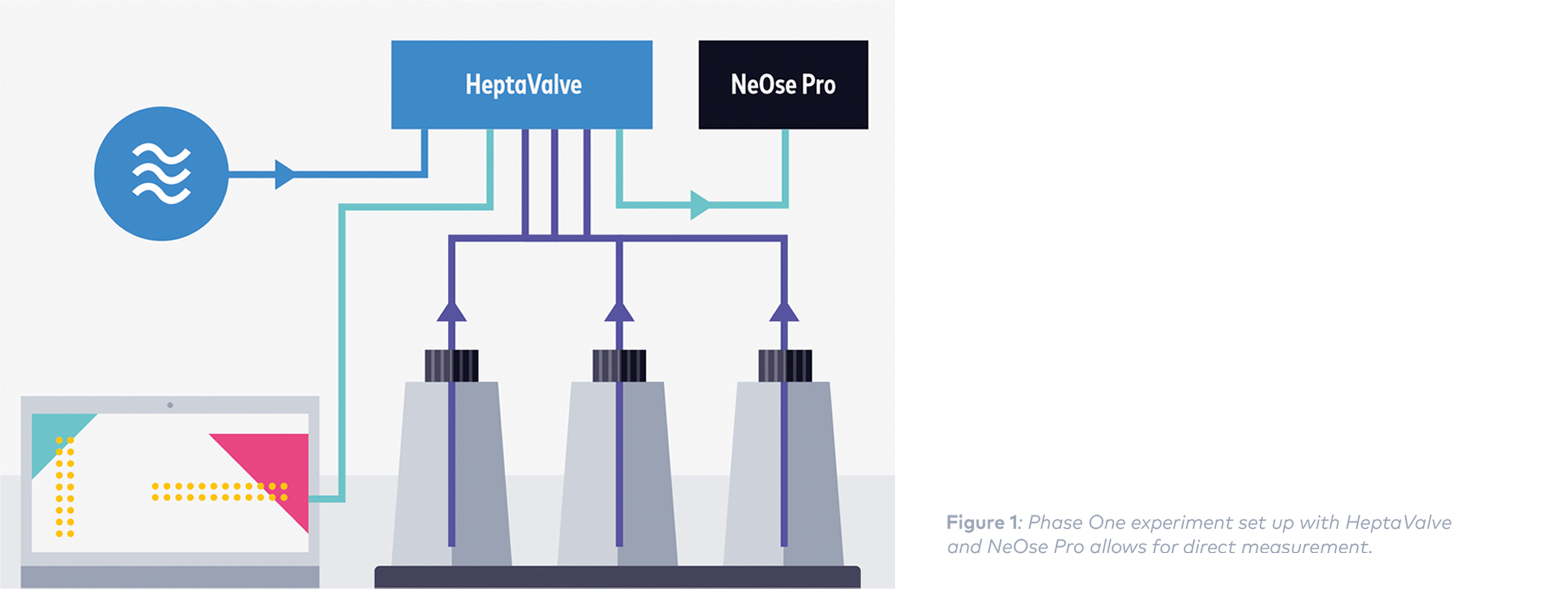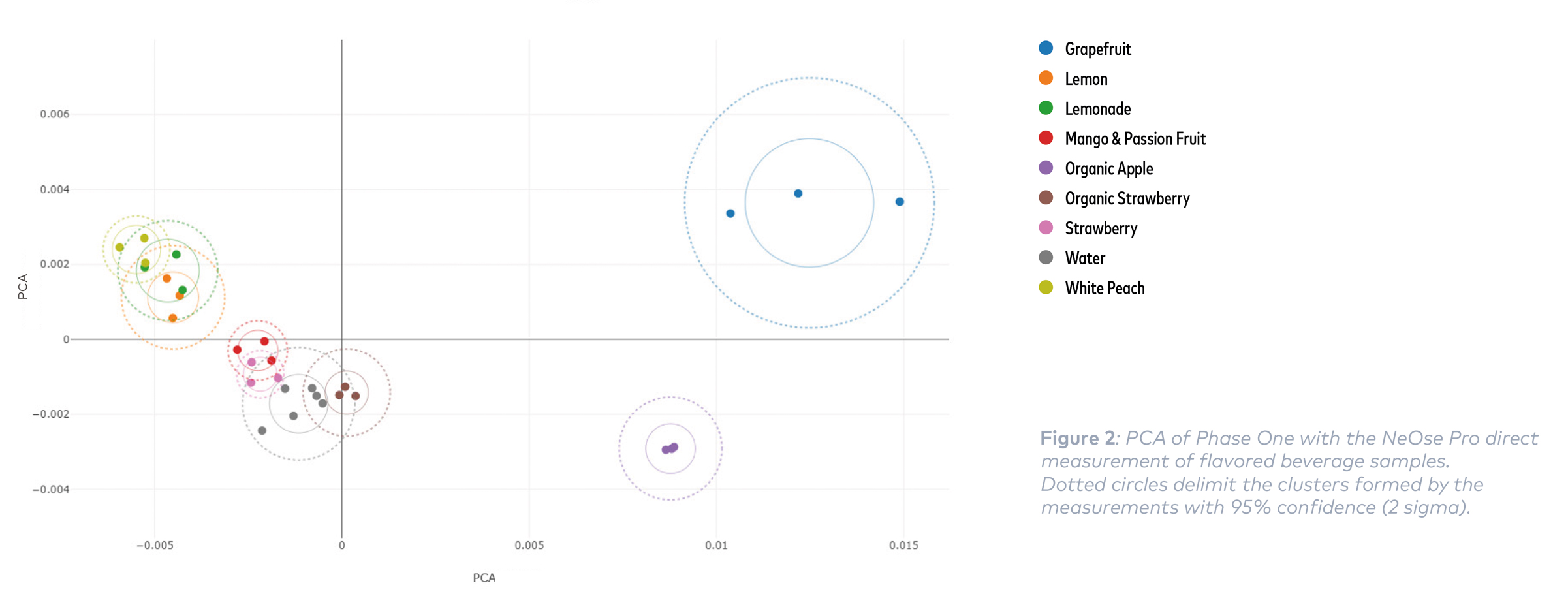Discriminating flavored beverages
Results of evaluation of various flavored waters
Consumers’ drive for more healthy and functional beverages has led to a huge jump in the flavored water market in recent years. Interest in new and sometimes unusual taste combinations that support well-being is leading to an increasingly competitive market.
The emphasis on clean, natural flavors has translated to a consumer perception that these beverages taste crisper and fresher than their traditional soda counterparts. As brands seek to expand their flavor offerings, achieving the right flavor essence for still or sparkling waters continues to be a challenge.
Digital olfaction offers a solution for both new product formulation and existing product quality control. However, given the low intensity of odors to achieve the “hint” of flavor, this use case requires a sensory analysis tool that is not just objective and dependable, but also highly sensitive and selective.
Challenge
As the flavored water market continues to grow, there is more competition in both brands and flavors available to consumers. The ability to deliver the right balance of flavor—both in product manufacturing and R&D formulation for new products—is important to customer acquisition and loyalty.
Sensory analysis still heavily relies on human panels—which can be expensive and prone to subjectivity. Digital olfaction provides a consistent, objective way to characterize and control the olfactive experience for flavored waters.
Solution
Digital olfaction combines biosensors, advanced optics and machine learning to mimic the human sense of smell which can then be used for objective classification and characterization of flavors.
To illustrate the potential for this technology in the flavored water field, Aryballe tested eight different flavored waters to determine the ability of their NeOse Pro and Amplifier accessory to classify the results. Unflavored water was also used as a control in the experiments
| Sample | Flavor |
|---|---|
| Control | Non-flavored Water |
| A | Grapefruit |
| B | Lemonade |
| C | Lemon |
| D | White Peach |
| E | Organic Strawberry |
| F | Strawberry |
| G | Organic Apple |
| H | Red Tea, Mango, and Passion Fruit |
Phase One experiments (Direct Measurement) were performed with a NeOse Pro equipped with a HeptaValve to ensure repeatability and consistency of samples. A small volume (5 ml) of each flavored water was placed in a 50 ml vial and stored at room temperature for 2 hours to allow the headspace to develop.

The first phase experiments are presented in Figure 2 showing the PCA result of the products against the control. There was significant intensity above the limit of detection (LOD) of the NeOse Pro for all samples.

The PCA in Figure 2 shows two well defined clusters for Sample A (Grapefruit) and Sample G (Organic Apple) while the rest of the samples are clustered together on the left side of the horizontal axis.
While the results of direct measurement showed some clustering, it was not possible across the full portfolio of products tested, meaning that as an analysis tool the NeOse Pro could not feasibly replace current evaluation methods.
In Phase Two of the experiments, we implemented the NeOse Pro coupled with an Amplifier, which is an accessory with a Tenax TA cartridge which allows for the concentration of odors pre-measurement.

In this setup, 10 ml of each flavored water was added to a 100 ml vial and stored at room temperature for 2 hours to allow the headspace to develop. In the concentration step, odors were collected in the Amplifier for 180 seconds. After the 180 second concentration, all samples except for H (Hibiscus) provided a signal above the Limit of Detection for the NeOse Pro device..

The PCA shows a good separation for all the flavored waters with a 95% confidence for those with a signal above the limit of detection for the device.
Conclusion
In general, the direct measurement with the NeOse Pro device (phase one experiments) did not show a good distinctions across the flavored water portfolio in this experiment. However, when coupled with the Amplifier accessory the NeOse Pro was able to distinguish all samples due to the Amplifier’s “drying” effect on the odor signals, which makes the flavor easier to distinguish from the water background.

